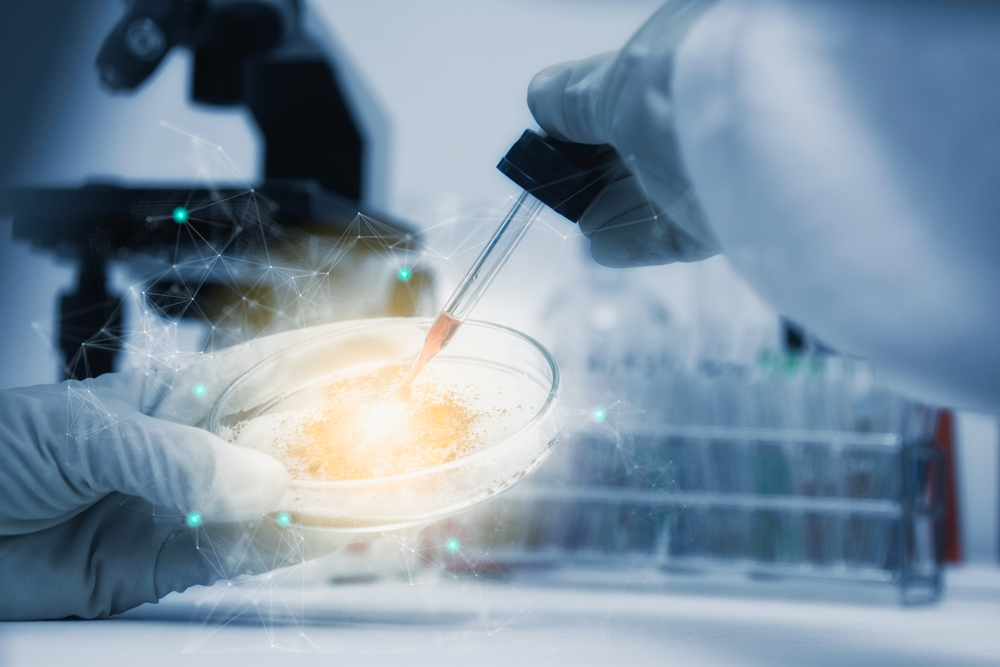Stem Cell Gene Therapy Restores Glycogen Levels, Aids Movement in Mouse Study

Transplanting blood stem cells modified to carry the GAA gene raised glycogen levels almost to normal across a range of organs, including the brain, and improved locomotion in a mouse model of Pompe disease, a study reported.
These findings suggest that blood stem cell gene therapy, in which a patient’s own stem cells are modified to produce the acid alpha-glucosidase (GAA) enzyme, may be a promising approach for treating people with classic infantile Pompe disease.
The study, “Lentiviral Hematopoietic Stem Cell Gene Therapy Corrects Murine Pompe Disease,” was published in the journal Molecular Therapy Methods and Clinical Development.
Pompe is caused by mutations in the GAA gene that provides the instructions for making the GAA enzyme. This enzyme is responsible for breaking down glycogen, a complex sugar molecule, and its lack results in an abnormal accumulation of glycogen inside cells.
The most aggressive form of this disease, classic infantile-onset Pompe disease, is evident shortly after birth and manifests as muscle weakness, poor muscle tone, and breathing difficulties.
Patients are treated with Lumizyme (alglucosidase alfa; by Sanofi Genzyme), a form of enzyme replacement therapy (ERT) that delivers a working version of the GAA enzyme to cells. But while this approach extends survival and improves quality of life, about half of all patients still die very young, and residual disease is evident in the others.
One of the major setbacks of ERT is its inability to correct the neurological symptoms of Pompe disease, due to difficulties in getting the enzyme across the blood-brain barrier. The approach also requires weekly or biweekly infusions, and many patients develop antibodies that limit the enzyme’s effectiveness.
Blood (hematopoietic) stem cell gene therapies have emerged as a promising approach for Pompe patients, as the stem cells and their mature progeny provide a continuous supply of the GAA enzyme. This would not only allow for a long-lasting therapeutic effect, but could also have the ability to correct neurological problems — since some immune cells deriving from the blood stem cells can enter the brain.
A prior study examining this approach in animal models of Pompe, however, failed to demonstrate a complete depletion of glycogen from the brain and muscles, likely because insufficient levels of GAA were being produced.
To address that, the same research team at Erasmus University Medical Center, in the Netherlands, modified the genetic vector carrying the GAA genetic sequence into cells, as well as the gene itself, in a way that could increase the amount of GAA enzyme cells produce and secrete.
In the lab, the vector was given to stem cells through a lentivirus, a virus modified to be harmless, that delivers the genetic sequence and incorporates into the stem cell’s DNA, so that it can be passed down to new cells. The modified stem cells were then transplanted to mice between 6 and 8 weeks old.
Results showed that the new vector increased enzyme activity in the spleen by nearly 20 times compared to the previously used vector, suggesting it would be more effective at treating the condition.
Indeed, 10 months after transplant, glycogen was back to near normal levels in the heart, muscles, liver, kidney, lung, and in cartilage, which “may be difficult to reach by GAA due to its impenetrable density and low oxygenation from virtually no blood supply,” the researchers wrote.
The therapy also resolved heart enlargement and showed a trend toward improvement in heart rhythm. While untreated mice had much less voluntary movement on a wheel, stem cell-treated animals were running much longer distances and nearly twice as fast — similar to mice without Pompe.
Notably, the new stem cell gene therapy increased GAA activity in the brain to about half that found in healthy controls, and reduced glycogen levels in the brain to near normal levels. GAA was found in roughly half of microglia cells — the brain’s immune cells — and in all astrocytes, which are supporting cells.
This demonstrated that about 50% of microglia in the brain derive from therapeutic stem cells, while the other half are formed during development and persist in the brain throughout life.
In turn, astrocytes — major players in energy delivery, production, and utilization and almost exclusively store glycogen — produce a receptor that can bring GAA inside, “which explains why virtually all astrocytes appeared GAA positive after treatment,” the researchers wrote.
They also examined bone marrow cells to determine the regions in which the GAA gene was integrated in the DNA. This is important since the delivered gene can increase the activity of other genes, including those that promote cancer.
The team found no preference toward sites in the DNA that could lead to cancerous expansion of cells, suggesting that the approach is safe.
“The present report demonstrates that transplantation of mice at 6–8 weeks of age with [blood stem cells] … results in high and sustained GAA activity in the tissues that are most affected in Pompe disease,” the scientists wrote.
“The therapeutic findings warrant further development including similar, better, and/or safer constructs directed at clinical implementation of the approach as a single intervention therapy with curative intent,” particularly in patients with classic infantile and juvenile Pompe disease, the team concluded.






